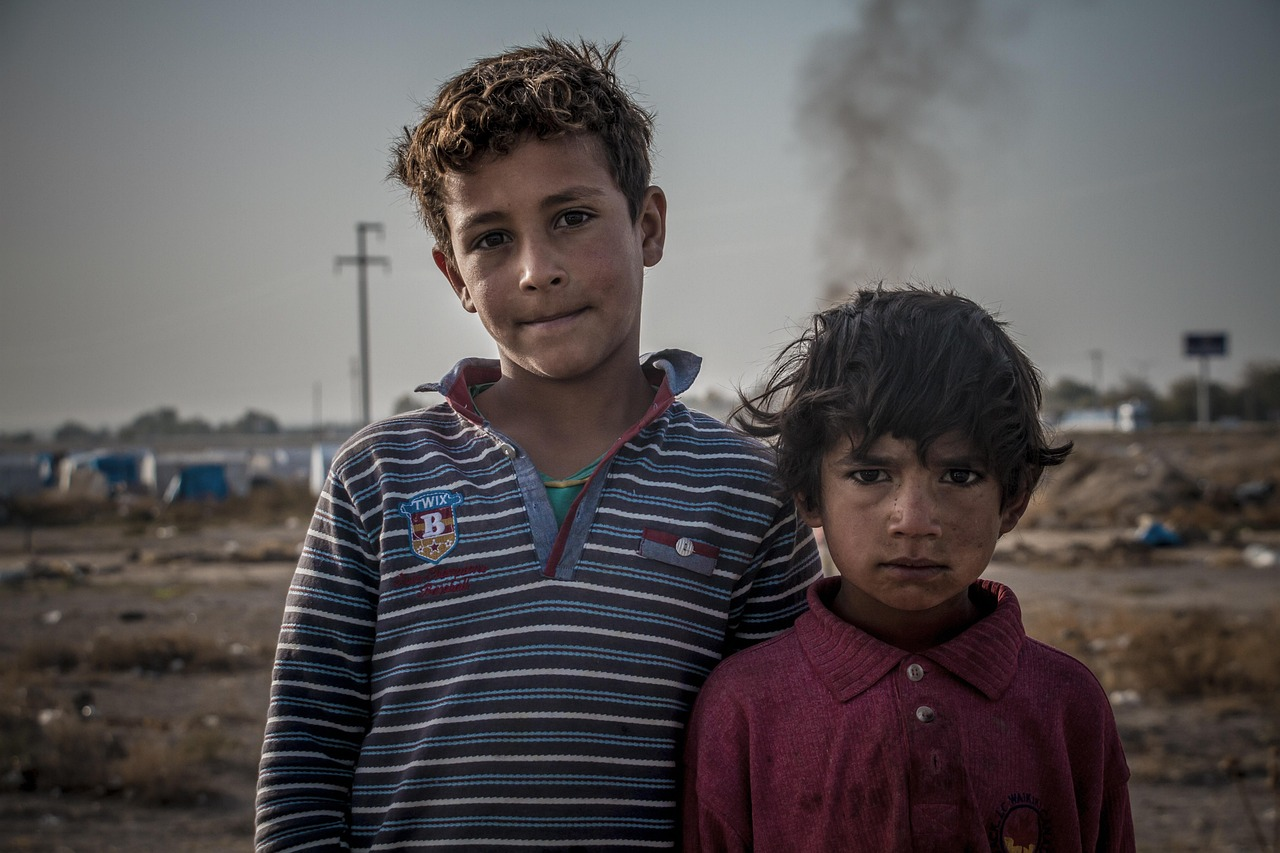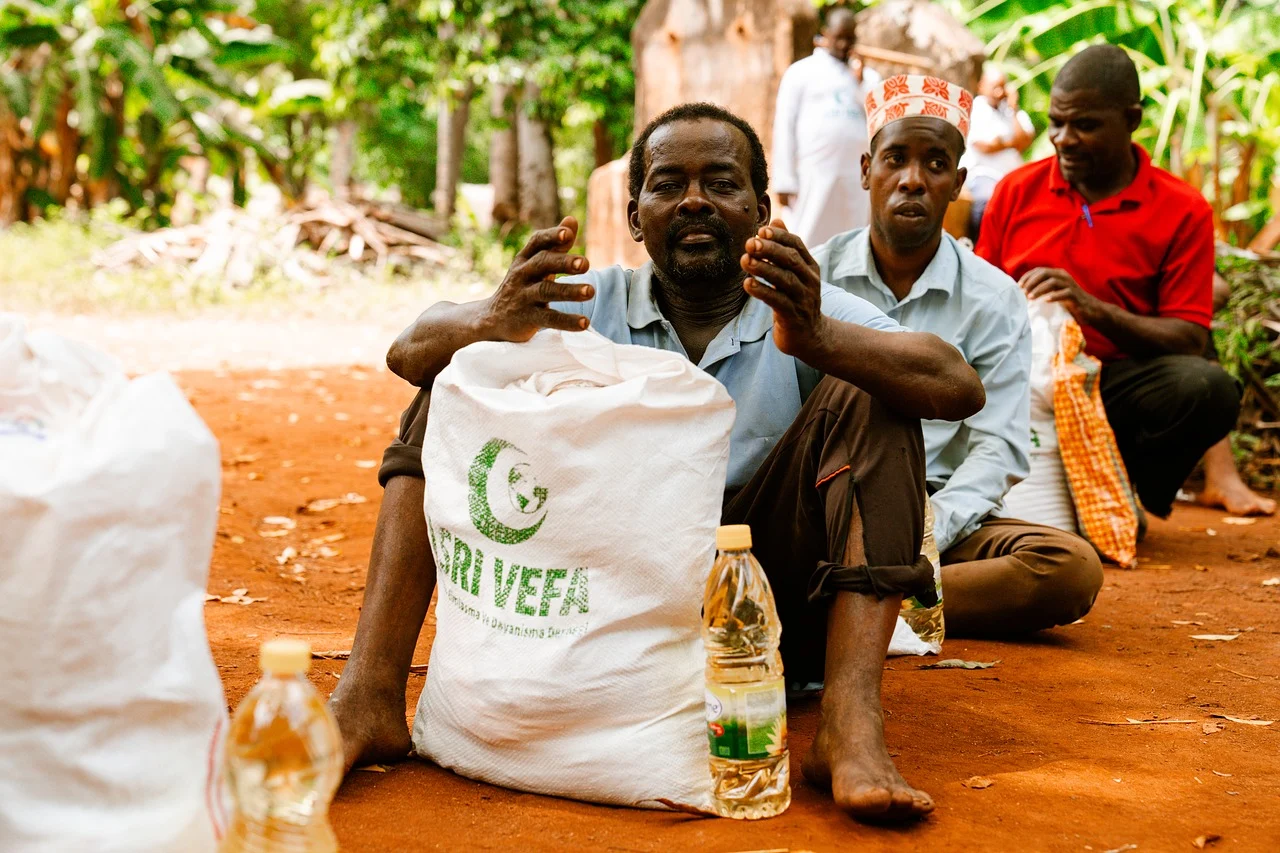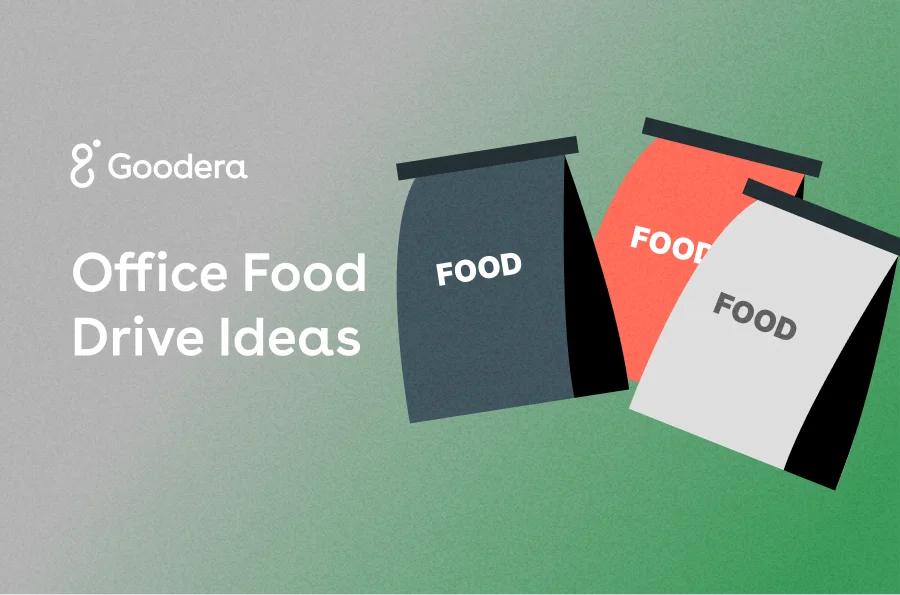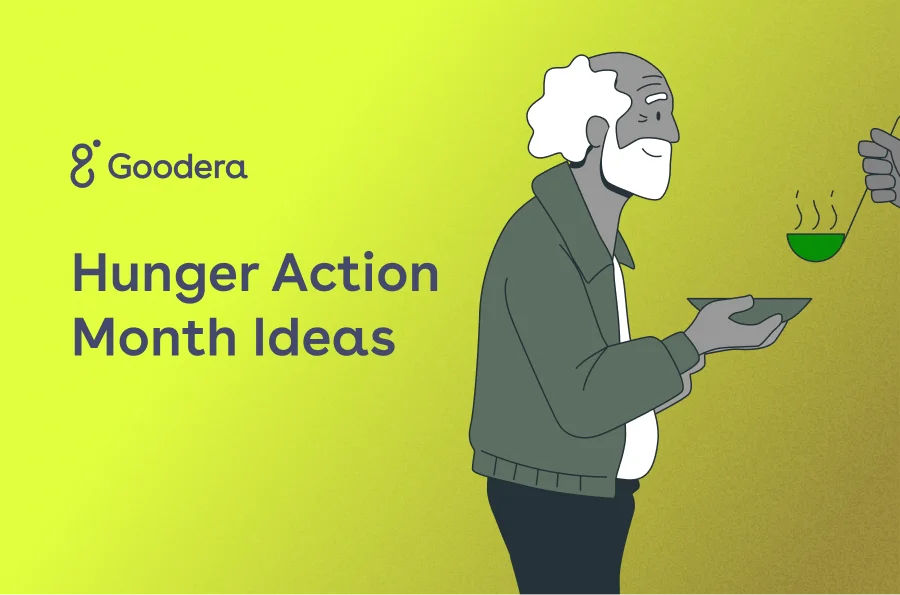World Hunger Facts 2025: The Truth Behind a Silent Crisis
Hunger doesn’t make headlines.
But every minute, eleven people die from it, and most of them are children.
It’s a tragedy slowly escalating into an epidemic. And the dream of Zero Hunger? It’s slipping further out of reach. Understanding world hunger means confronting uncomfortable truths: Who’s most affected? Why is it escalating? Can you do something about it? Do you want to?
This blog is dedicated to uncovering these truths, facing them head-on, and steeling our resolve to make a difference.
And if you're ready to take action, we've also included some Hunger Action Month ideas. These are activities, drive ideas, and org-wide events through which your organization can contribute to fighting world hunger.

In this blog:
- What percentage of the world is hungry?
- What is the main cause of world hunger?
- Which country has the highest hunger rate in the world?
- What are the statistics for food hunger?
- How many hunger deaths happen per day?
- 10 must-know facts about world hunger
- How you can make a difference
What Are the Most Important Facts About World Hunger in 2025?
Behind every hunger statistic is a real person, a child missing meals, a parent skipping dinner so their kids can eat, a community watching crops fail for the third year in a row. These aren't distant tragedies; they’re everyday realities for millions. When we zoom out to look at the global data, a painful picture emerges, but so does a clearer understanding of where help is most needed.
What percentage of the world is hungry in 2025?
In 2025, approximately 9.1% of the global population if affected by hunger. That’s more than 735 million people who do not have enough food to lead healthy, active lives. From war-torn countries to regions hit hardest by drought and flooding, the crisis is deepening, especially for children, displaced families, and communities already living in poverty.
How many hunger deaths happen per day around the world?
Roughly 25,000 people die each day due to hunger or hunger-related causes, with children under five making up a heartbreaking proportion of these deaths. That’s one life lost every few seconds to a preventable crisis.
Here are some of the most urgent world hunger facts:
- Nearly one in ten people still do not get enough food to lead active, healthy lives.
- The number of undernourished people has grown by over 122 million since 2019.
- Roughly 45% of all deaths among children under age five are still linked to undernutrition, according to the latest global estimates for 2024. While the total number may shift year to year, this proportion remains heartbreakingly steady.
- Conflict and climate shocks are now top drivers of hunger, disrupting food production and access.
- Africa remains hardest hit: over 307 million people were chronically undernourished in 2024, more than one in five.
- Food waste remains massive, with roughly one-third of all food produced going uneaten worldwide, enough to feed billions.

Source: Wikimedia
What Is the Main Cause of World Hunger?
Hunger is rarely caused by food shortages alone. Today, world hunger is driven by a combination of conflict, climate change, economic instability, and deep-rooted inequality. These factors intersect to block access to food, reduce agricultural productivity, and widen the gap between abundance and need. To understand the crisis fully, we must look at how each of these forces plays out in real time.
How Does Conflict and Displacement Increase Hunger?

Image Source: Pixabay
Armed conflict remains the most significant cause of global hunger in 2025, affecting over 295 million people worldwide. According to the 2025 Global Report on Food Crises, conflict is not only triggering but also sustaining acute food insecurity in many of the hardest-hit regions. The UN Secretary-General noted that “from Gaza and Sudan to Yemen and Mali,” conflict-fueled hunger is pushing millions to the brink of starvation.
The World Food Programme (WFP) echoes this, identifying conflict as the main cause of severe hunger emergencies, especially in areas like Sudan and Gaza, where violence has escalated in recent months.
How Conflict Disrupts Food Systems
Conflict doesn’t just cause temporary disruptions, it breaks entire systems. Infrastructure such as roads, storage facilities, and irrigation systems is often destroyed, making food production nearly impossible. Humanitarian access is blocked, delaying or halting the delivery of life-saving food aid. Displaced populations are left without farmland, income, or stable food supplies. These cascading effects are highlighted in the latest Global Hunger Index (GHI), which identifies protracted conflict as a root cause of long-term hunger.
As noted in the UN’s State of Food Security report, food insecurity is not just a result of short-term violence; it becomes embedded in communities when conflicts drag on for years.
1. Ukraine: Global Food Systems Under Strain
Ukraine, once dubbed the “breadbasket of Europe,” continues to experience devastating impacts from the war with Russia. Attacks on grain storage sites and Black Sea export routes have crippled the country’s ability to distribute wheat, corn, and sunflower oil to regions that depend on it, particularly in Africa and the Middle East. According to the 2025 UN hunger reports, interruptions in Ukrainian exports have led to skyrocketing food prices and intensified food insecurity in already fragile nations.
2. Sudan: Violence Displaces Millions and Halts Agriculture
In Sudan, the ongoing civil war has displaced over 9 million people—one of the largest displacements in the world in 2025, per UNHCR and WFP. Families fleeing conflict zones now reside in overcrowded camps with minimal access to food, clean water, or healthcare. Farming in regions like Darfur has “all but ceased,” as farmers risk their lives by tending to their land.
3. Gaza: On the Brink of Famine
Gaza is facing catastrophic levels of hunger, with multiple aid organizations warning that famine is imminent. Months of airstrikes, blockades, and humanitarian restrictions have decimated infrastructure. Food deliveries are either delayed or denied, and basic services like water, electricity, and healthcare have collapsed. Children, the elderly, and pregnant women are especially at risk.
The WFP warns that the situation is among the worst it has seen in recent years, with famine already declared in parts of Sudan and expected imminently in Gaza. As of mid-2025, the territory is experiencing one of the most acute hunger crises in the world.
Prolonged conflicts don’t just initiate hunger; they entrench it. As stated by the UN FAO and WFP, violence destroys supply chains, displaces millions, and delays recovery for years. Since 2016, 35 countries have remained in a chronic state of food crisis due to ongoing conflicts. Even when fighting subsides, rebuilding food systems is a slow and underfunded process, leaving entire populations vulnerable long after headlines move on.
How Climate Change Drives Food Scarcity

Image Source: Pixabay
Climate change is rewriting growing seasons, crippling agriculture, and amplifying food insecurity, especially in already vulnerable regions. From droughts and floods to wildfires and crop failures, the planet’s changing climate is now one of the leading threats to global food systems.
Across 2024 and 2025, reports from the World Meteorological Organization (WMO) and FAO confirm that rising global temperatures are altering rainfall patterns, worsening droughts and floods, and disrupting agricultural systems in ways we’re only beginning to fully grasp.
Here are some key global situations worth noting:
1. East Africa: Droughts Leave Over 30 Million in Crisis
In 2024, six failed rainy seasons across East Africa, including Ethiopia, Kenya, and Somalia, triggered widespread crop failure and livestock deaths. The WFP estimates over 30 million people faced crisis-level food insecurity, with families in rural areas losing access to traditional sources of food and income. Drought-driven hunger in this region has been exacerbated by a lack of infrastructure, rising food prices, and prolonged displacement.
2. Amazon Basin: Heat and Drought Impact Food and Fisheries
In 2024, the Amazon basin experienced record-breaking droughts and searing heat, disrupting both agriculture and fisheries. For Indigenous and riverine communities, this translated into loss of traditional livelihoods and food sources. The FAO’s updates confirm sharp declines in fish stocks and harvests across Brazil, Colombia, and Peru, further intensifying food insecurity.
3. United States: Fires and Droughts Hit Global Supply Chains
In the United States, 2025 brought severe drought and unprecedented wildfires that damaged wheat and corn production across the Midwest and West. These setbacks impacted not only local farmers but also global markets—commodity prices spiked, and downstream shortages affected international food imports.
4. Climate-Related Displacement Now Exceeds Conflict Displacement
According to UNHCR and WFP, more people are now being displaced by climate-related disasters than by armed conflict. Families are forced to migrate when farmlands become barren or uninhabitable, leading to overburdened host communities and deeper cycles of food insecurity.
5. The Bigger Picture: Climate Change Is Reshaping Agriculture
Climate change is fundamentally altering where and how food can be grown. The State of Food Security and Nutrition in the World 2024 and State of the Global Climate 2024 both emphasize that shifting weather patterns are shortening growing seasons, destabilizing global supply chains, and putting marginalized regions, especially in Sub-Saharan Africa, South Asia, and Central America, being at highest risk.
As climate shocks intensify, the need for resilient, climate-smart food systems becomes not just important, but urgent.
Which Country Has the Highest Hunger Rate in the World?

Image Source: Pixabay
As of 2025, South Sudan has one of the highest hunger rates globally, with over 57% of the population, an estimated 7.7 million people, experiencing acute food insecurity at IPC Phase 3 or above, according to the Integrated Food Security Phase Classification (IPC) and the World Food Programme (WFP). Within this group, 2.5 million people are classified in Emergency (IPC Phase 4), and around 63,000 are in Catastrophe (IPC Phase 5), the most severe level, indicating famine conditions.
These figures reflect the devastating impact of ongoing conflict, economic instability, and mass displacement across the country.
Other nations identified as 2025 hunger hotspots include Yemen, Somalia, and the Democratic Republic of the Congo, as detailed in the FAO-WFP Hunger Hotspots Report and the WFP’s regional updates, where persistent insecurity, climate shocks, and economic collapse are placing millions at risk of starvation.
How Can We Reduce Hunger Around the World in 2025 and Beyond?
Despite the grim statistics, hunger is a solvable problem, and that’s our greatest source of hope.
Every day, individuals, communities, organizations, and governments are working to reduce hunger across the globe. From food distribution in crisis zones to sustainable farming in rural regions, from school feeding programs to policy reform, change is already happening. But the scale of the crisis demands coordinated, intentional, and sustained efforts across all levels of society.
Here’s how we can reduce hunger around the world in 2025 and beyond:
1. Provide Emergency Food and Nutrition Where It’s Needed Most
When conflict, natural disasters, or economic collapse strike, people don’t just lose their homes, they lose access to food. The first and most immediate solution is ensuring that food and nutrition assistance reach those in urgent need.
- Rapid-response food distribution in hunger hotspots (e.g., Gaza, Sudan, Haiti)
- Therapeutic feeding for children suffering from severe malnutrition
- Mobile clinics that deliver nutrition support to remote or displaced populations
Organizations like the World Food Programme (WFP) are on the frontlines of these crises, delivering food and lifesaving nutrition support to over 150 million people a year.
2. Invest in Farming That Feeds Communities Long-Term
Most of the world’s hungry live in rural areas, and many are smallholder farmers themselves. Supporting sustainable, climate-resilient agriculture is critical for long-term food security.
- Train farmers in climate-smart techniques like drought-resistant crops, agroforestry, and water conservation
- Provide access to tools, seeds, irrigation, and markets
- Encourage local governments to invest in rural infrastructure and cooperatives
Programs like the FAO’s Climate-Smart Agriculture initiative help farmers adapt to climate shocks and grow enough to feed their families—and their communities.
3. Fight the Root Causes: Poverty and Inequality Keep Hunger Alive
Hunger is predominantly caused by a lack of access and not the existence of enough food. Even in places where food is available, millions cannot afford it due to poverty, unemployment, and inequality.
Solutions must address:
- Job creation and income support for vulnerable populations
- Education and empowerment of women, who are more likely to invest in family nutrition
- Social protection programs like food stamps, school meals, and safety nets
When governments and NGOs work together to raise incomes and reduce inequality, hunger declines. According to UNICEF, expanding access to social protection could lift millions of children out of hunger and undernutrition.
4. Cut the Waste, Feed More People
Globally, nearly one-third of all food produced is wasted, while 735 million people go hungry. Closing this gap could be a game-changer.
- Improve storage and transport in developing countries to reduce post-harvest losses
- Encourage businesses and households to adopt responsible consumption practices
- Promote food recovery and redistribution models (e.g., Too Good To Go, Feeding India, etc.)
Policy-level changes, like France’s ban on supermarket food waste, demonstrate how legislative action can help ensure surplus food feeds people, not landfills.
5. Work to Strengthen Local Food Systems
Resilient communities require resilient food systems. That means:
- Investing in local production and processing
- Supporting farmers’ markets, community kitchens, and cooperatives
- Encouraging urban agriculture and vertical farming in dense cities
These efforts reduce reliance on long, vulnerable supply chains and give communities more control over their food security.
6. Advocacy, Education, and Global Cooperation
Finally, awareness matters. Advocacy fuels funding. Education shapes habits. And international cooperation ensures that hunger is treated not as a siloed issue, but as part of the broader puzzle of climate justice, peacebuilding, and equity.
You can:
- Advocate for policies that prioritize hunger relief and nutrition
- Support school feeding programs that keep children healthy and in school
- Vote for leaders who prioritize international aid and food security
- Educate your networks on how to reduce food waste and support local farmers
But no one can tackle hunger alone. While individual actions build momentum, organizations on the frontlines are turning that momentum into measurable change, delivering meals, building resilience, and empowering communities every day.
Let’s take a closer look at the groups leading this fight and the impact they’re making across the globe.
Organizations Making a Real Effort to Alleviate Hunger
1. World Food Programme (WFP)
The World Food Programme is the humanitarian arm of the United Nations focused on ending hunger and promoting food security in the world’s most vulnerable regions. Their mission: to save lives in emergencies and build long-term solutions to hunger and malnutrition.
- In 2024, WFP assisted 124.4 million people across over 120 countries with food, cash, and nutritional support.
- Their programs delivered 16.1 billion daily rations, including vital emergency food to war-torn and disaster-struck areas.
- WFP’s school meal programs reached 20 million children in 61 countries, helping improve both health and school attendance.
- Over 27.6 million people received specialized nutrition treatment—especially children under 5 and pregnant or breastfeeding women.
2. Action Against Hunger
Action Against Hunger is a global humanitarian organization that takes a comprehensive approach to ending hunger. Their mission is to save lives by preventing, detecting, and treating malnutrition, especially in areas affected by conflict, climate change, and poverty.
- In 2024, they operated in over 45 countries, reaching millions through programs focused on nutrition, food security, clean water access, and emergency response.
- Their recent global report highlights that 783 million people face hunger—an urgent call to action as crises multiply.
- The organization treats severe acute malnutrition, which causes 2 million preventable child deaths each year.
3. Feeding America
Feeding America is the largest domestic hunger-relief organization in the United States. With a mission to feed America’s hungry through a nationwide network of food banks, they focus on equitable access to nutrition, reducing food waste, and supporting communities in crisis.
- In 2023, they distributed more than 6 billion meals through 200 food banks and 60,000 partner agencies.
- Their reach helped support over 50 million people, including 1 in 5 children, amid ongoing economic instability.
- In 2024, Feeding America was ranked as the #1 U.S. charity by Forbes, recognized for impact and financial stewardship.
4. Heifer International
Heifer International believes ending hunger begins with empowering smallholder farmers. Their mission is to end hunger and poverty while caring for the Earth by supporting families through livestock, training, and market access that lead to self-reliance.
- Since 1944, Heifer has helped 52 million families globally build sustainable livelihoods.
- In 2024 alone, they supported 1.3 million households with livestock, regenerative agriculture training, and women's empowerment initiatives.
- Through Heifer Impact Capital, they provided financial services to 702,000+ farmers across 12 countries, helping families increase income and food security.
Also Read: Top Hunger Relief Charities for Hunger Action Month
Every action counts. Whether you're organizing a food drive, donating to a hunger nonprofit, or just rethinking what ends up in your trash bin, you’re part of the solution.
We have the food. We have the knowledge. What we need now is the collective will to end hunger for good.
Hunger Is a Crisis, But Also a Call to Action
Hunger continues to take lives, silence potential, and strain communities across the globe. But hunger isn’t just a crisis—it’s a challenge we can meet. Behind the 2025 hunger statistics are real people whose lives and futures hang in the balance. From children growing up without access to nutrition, to communities trapped by conflict and climate shocks, the need is urgent—but the solutions are within reach.
We know what causes hunger: conflict, climate change, and inequality. And, we know what can end it: awareness, collective action, and compassion.
Every effort counts. Whether it’s organizing a food drive at your workplace, donating to hunger relief organizations, or advocating for fair food systems, your action can make a difference.
Ready to turn awareness into impact? Join Goodera’s Hunger Action Month 2025 initiatives to volunteer, lead change, and help feed hope. Together, we can build a world where no one goes to bed hungry.
Frequently Asked Facts on World Hunger
1. What Does Food Insecurity Mean?
Food insecurity refers to the lack of consistent access to enough safe and nutritious food to lead an active and healthy life. It doesn’t just mean hunger—it includes the uncertainty of where the next meal will come from, reliance on low-quality or inadequate diets, and the stress of limited food options due to financial, geographic, or political barriers.
2. Is World Hunger Getting Worse or Better?
As of 2025, global hunger is worsening in many regions. Conflict, economic inequality, and climate change continue to push food systems to the brink. While some countries have made progress in reducing hunger rates, others have seen setbacks due to war, inflation, and climate disasters. The overall trend remains concerning, especially in areas already vulnerable to chronic food insecurity.
3. How Does Hunger Affect Education and Childhood Development?
Hunger significantly impacts a child’s ability to learn and grow. Malnourished children often struggle with concentration, memory, and physical development, leading to lower school attendance and poor academic performance. In severe cases, chronic undernutrition during early years can result in lifelong cognitive and developmental challenges.
4. Can Ending Hunger Be Achieved in Our Lifetime?
Ending hunger is an ambitious but achievable goal if the global community acts with urgency and collaboration. Innovations in agriculture, stronger social protection systems, sustained humanitarian aid, and equitable food distribution can collectively reduce hunger. However, achieving Zero Hunger requires consistent political will, investment, and grassroots participation across sectors.
5. What Role Do Corporations and Workplaces Play in Fighting Hunger?
Beyond governments and nonprofits, businesses and workplaces can drive real change. From organizing food drives and supporting hunger relief nonprofits to investing in sustainable supply chains and employee volunteering, companies can create a scalable impact. Hunger Action Month is a great time to activate such initiatives.
6. How Is Hunger Measured Globally?
Hunger is typically assessed using metrics like the Prevalence of Undernourishment (PoU), Food Insecurity Experience Scale (FIES), and Integrated Food Security Phase Classification (IPC). These tools evaluate factors such as dietary intake, frequency of food access, and the severity of food insecurity at household and national levels.











